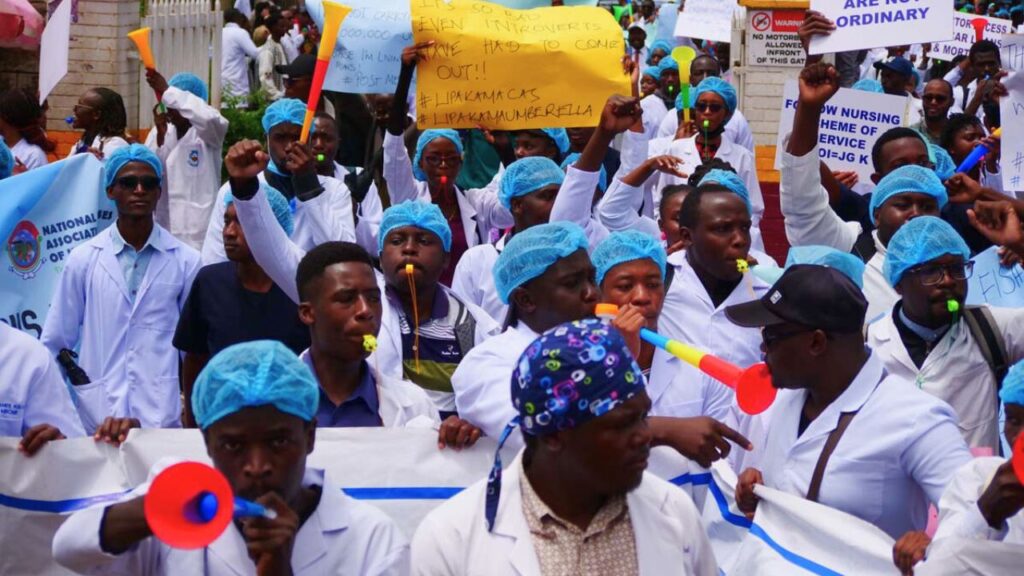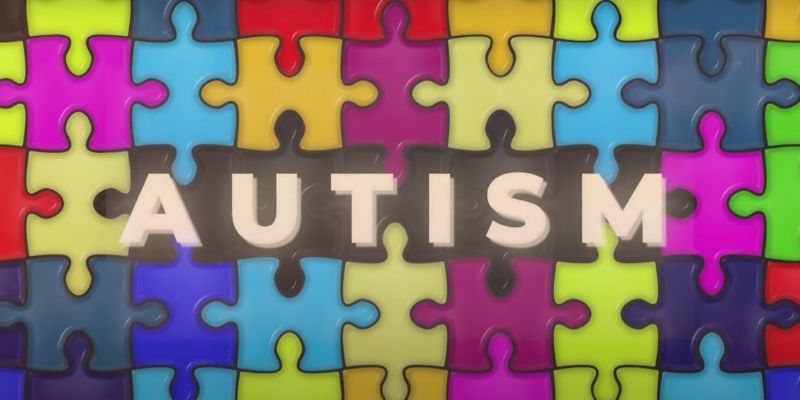More than 200 people, among them senior government officials, principal secretaries and CEOs of state agencies, have been arrested, arraigned in court and charged with diverse criminal offences as a result of President Uhuru Kenyatta’s renewed war on graft.
On 22 July 2019, the Director of Public Prosecutions (DPP) ordered the arrest of and proffered charges against 28 senior government officials, among them Henry Kiplagat Rotich and Kamau Thugge respectively the Cabinet and Principal Secretaries of the National Treasury, the Principal Secretary of the Ministry of the East African Community, the Managing Director of the Kerio Valley Development Authority, a state corporation, and the Director of CMC di Ravenna, an Italian company. According to the DPP, investigations have established that the charged officials flouted procurement rules and abused their oath of office in awarding or otherwise ensuring that CMC di Ravenna secured the contract for the construction of the Arror and Kimwarer dams. The contractual amount is in the region of $600 million.
Prosecuting corruption in Kenya: A troubled past
From Kenya’s independence in 1963 to the establishment of the Kenya Anti-Corruption Authority in 1987, the duty to prosecute government corruption fell on the Office of the Attorney General (AG) who simultaneously happened to be the government’s chief legal advisor and chief legal defender. Requiring an office to prosecute its chief client yielded predictable results. Despite damning reports by the office of the Auditor and Controller General, as well as independent reports of the Parliamentary Public Accounts and Investment Committees, the AG remained resolutely intransigent towards bringing charges against government officials of any stripe, and outrightly protected senior government named in the reports.
In the Goldenberg scandal – an export compensation scam under the Daniel arap Moi regime that is estimated to have cost Kenya 10 per cent of her GDP – the AG at the time (and current Senator for Busia County), Amos Wako, failed to initiate proceedings for four years after the scandal came to light, and was only moved to do so by a suspension of International Monetary Fund (IMF) aid and the combined pressure of the Law Society of Kenya, donor nation governments and an increasingly outraged and assertive public.
Notwithstanding the said pressure, Wako used a variety of guises to impede the prosecution, including attempting to oust the jurisdiction of the High Court in the matter, numerous adjournments, withdrawing charges altogether and then being compelled by foreign pressure to reinstate them. The Minister of Finance at the time was never so much as charged and to date nobody has ever been convicted.
In the Goldenberg scandal, the AG at the time (and current Senator for Busia County), Amos Wako, failed to initiate proceedings for four years after the scandal came to light, and was only moved to do so by a suspension of IMF aid and the combined pressure of the Law Society of Kenya, donor nation governments and an increasingly outraged and assertive public.
Kenya then moved to break the prosecutorial monopoly of the AG. The Kenya Anti-Corruption Authority (KACA) was established in 1987 by the amendment of the Prevention of Corruption Act (Cap. 65) but was hampered by legal, administrative and budgetary constraints that appeared deliberate. Its first director, John Harun Mwau, was appointed 10 years after the establishment of KACA, for instance, and was shortly thereafter sacked by the president at the recommendation of a tribunal of inquiry after the director had obtained warrants of arrest against high ranking officials of the Treasury as well as the Kenya Revenue Authority.
It is noteworthy that Mwau was not conventionally qualified for his post nor was the process of his appointment subject to a transparent recruitment process. Indeed it is believed that the appointment was a quid pro quo in return for his dropping out as a presidential candidate. Nonetheless he was fired just as he appeared to make progress.
As such, whereas his successor Aaron Ringera was undoubtedly well qualified for the post, being a well-respected High Court judge, his appointment was nonetheless greeted with scepticism. Justice Ringera took office in 1997 and by 2000 KACA had been declared unconstitutional by the High Court before any of the cases it had instituted had been, the court finding that the existence of KACA infringed upon the constitutional powers of the offices of the Attorney General and the Commissioner of Police for two main reasons: first, that Justice Ringera, being a judge and simultaneously the head of an organ of the Executive, offended the doctrine of separation of powers; and second, that under section 26 of the Constitution (as it then was), the AG had the exclusive power to prosecute. The cases that KACA was handling were handed over to the AG. These cases were either not continued or ended up being dismissed by courts.
The demise of KACA led to widespread civic and international outrage. Following the general elections in 2002 – widely believed to be the first truly free elections of their kind in Kenya’s history – Mwai Kibaki was elected president on a broad reform mandate, key to which was fighting corruption. He established KACA’s successor, the Kenya Anti-Corruption Commission (KACC) in April 2003 by way of the enactment of the Anti-Corruption and Economic Crimes Act. Exactly one year later, in April 2004, KACC was to face an acid test following the coming to light of what would prove to be the new administration’s nemesis, the Anglo Leasing Scandal (Anglo Leasing).
Anglo Leasing was a government procurement scandal in which a diverse array of fraudulent entities were secretly and unlawfully awarded large security contracts, and subsequently failed to deliver goods or services or grossly overcharged for them. In total it was estimated that there were at least 18 such contracts with a total value of $721 million.
The scandal reached the highest levels of government and was well-documented by the whistleblower John Githongo, who was then the Permanent Secretary for Governance and Ethics. Githongo was a former Executive Director of Transparency International in Kenya and was widely regarded as a person of integrity. Indeed his appointment was intended by Kibaki to signal his seriousness in the fight against corruption. Githongo’s report implicated the president himself, his vice president as well as various cabinet ministers and permanent secretaries.
The consequences were limited. The newly established KACC cleared three cabinet secretaries of obstructing the investigation using the novel and startling legal innovation that the whistleblower was not an investigator as defined by law. Far from playing the role of an independent prosecutor, KACC either did not investigate the most culpable, or when it did, it resorted to technicalities in order to defeat the very purpose it was formed to serve.
Anglo Leasing was a government procurement scandal in which a diverse array of fraudulent entities were secretly and unlawfully awarded large security contracts, and subsequently failed to deliver goods or services or grossly overcharged for them. In total it was estimated that there were at least 18 such contracts with a total value of $721 million.
In what is likely to exert a chilling effect on the exposure of government scandals, Githongo has recently had judgement entered against him personally in the amount of $270,000 for defamation in a suit brought by Dr. Christopher Murungaru who as Minister of Internal Security at the time of the coming to light of Anglo Leasing, was perhaps the leading figure under investigation in the scandal. This is the latest in a long series of legal setbacks which Githongo has faced since doing Kenya the immense service of bringing Anglo Leasing to light.
The Executive: Questionable tactics
Prosecution is no easy task. Prosecuting economic crimes such as corruption is even more so. These crimes tend to be characterised by a high degree of sophistication in terms of commission as well as concealment. Payments to those concerned, for instance, may be in the form of ‘commissions’ by shadowy organisations to multiple offshore jurisdictions, which are hard to trace and whose illegality is difficult to prove.
Unlike other crimes, a disproportionate amount of evidence tends to be in the hands of those who are already suspects. Gathering such evidence takes a great deal of time and expertise, involving teams of professionals applying specialised forensic techniques. The suspects themselves tend to be wealthy and powerful. They are able to hire large teams of lawyers who take advantage of every legal loophole, technicality, adjournment, appeal and delay in their client’s favour. They are able to apply pressure to witnesses and even to those working within the prosecution. Cases are likely to drag on for a long period of time and a government that wishes to see quick results in the war against corruption would be ill-advised to rely on prosecution as its primary and most visible strategy.
The DPP and the Directorate of Criminal Investigations (DCI) have conducted much of the war on corruption as a drama played out in the public eye. Press releases are issued and persons high and mighty are arrested with great fanfare. These persons are arraigned in court in vast numbers, and when bail is granted, the DPP cries foul. One of the major reasons that inform opposition to bail by the DPP is that the accused may interfere with investigations. This then implies that investigations were incomplete at the time suspects were arrested. This working methodology appears to essentially be a public relations exercise that fundamentally undermines successful prosecution.
Unlike other crimes, a disproportionate amount of evidence tends to be in the hands of those who are already suspects. Gathering such evidence takes a great deal of time and expertise, involving teams of professionals applying specialised forensic techniques.
Furthermore, those accused are often skilled political operatives, with established relationships within media. Charismatic and often able to appeal to ethnic loyalties, they can use the media as a tool to gain public sympathy and scuttle efforts at holding them accountable. In addition, early engagement of the media by the DPP as part of political theatre is likely to expose strategies and information prematurely, forewarning the accused. It must also be acknowledged that media organisations are corporate profit-making entities with interests of their own that may or may not align with the public interest.
Take for example the second National Youth Service (NYS) scandal. At one point there were 30 accused persons on one charge sheet in one case. Each was represented by at least one lawyer, and frequently by a team of lawyers. Each individual had to be put on their defence separately; each called and cross-examined their own witnesses. This takes about four days per witness. No country in the world can conduct a speedy trial, or even a fair one, under such circumstances. Even a matter as basic as a courtroom was a problem: there exists no courtroom in Kenya large enough to conduct this case, which had to be held in a ceremonial hall.
Unwieldy prosecution strategies have in the past been used as a guise under which the government appears to prosecute corruption while simultaneously taking steps to guard the prosecuted from legal culpability. During the Goldenberg scandal, the Attorney General, against the advice of his own Director of Public Prosecutions, framed more than 90 counts in one charge despite clear evidence that this would invalidate the charges, which is precisely what happened.
Given the difficulty of corruption investigation prosecution, cases should be restricted and prioritised based on pre-established criteria. Such criteria would include prosecuting the most senior figures, establishing judicial precedent and the probability of a successful outcome, for example, by targeting offences such as tax evasion that are relatively easier to prove.
Moreover, strategies such as plea bargaining and summary proceedings have proven useful in other jurisdictions as a means of shortening litigation and also gathering evidence of criminal activity that would otherwise be unavailable or require an enormous expenditure of surveillance and forensic resources.
The President
Prosecuting corruption amounts to locking the stable door after the horse has bolted. Prevention is by a huge margin the better strategy, a large responsibility that lies with the Executive headed by the President. That we are experiencing corruption at all means that the Executive has failed to stop it and must now rely entirely on prosecuting those whom it has allowed to raid public coffers.
The Executive does not appear to have a coherent professional strategy to fight corruption. In the recent past, buildings on riparian land were brought down in a flurry of activity. Now there is sudden silence. This work has not been completed. Also forgotten is NYS 1, in which the central figure is now a governor. There needs to be a demonstrated professional understanding of corruption in Kenya and its underlying causes that drives the war on corruption; absent that the process will appear ad hoc and susceptible to being interpreted as a platform to selectively seize and exploit the weaknesses of political opponents.
The Executive does not appear to have a coherent professional strategy to fight corruption. In the recent past, buildings on riparian land were brought down in a flurry of activity. Now there is sudden silence.
Furthermore, the close relationship between the presidency and prosecutorial agencies is problematic. Factual independence of prosecutorial agencies from members of government is crucial towards the effectiveness of prosecution as an anti-corruption strategy. Components of factual independence include stable and widely applied legal foundations for the prosecution of crimes. As such, prosecutions ideally should emanate from an independent office exercising a constitutional and legal mandate independently, rather than following directions from any one office, however well meaning. Trust in the war on corruption and the legitimacy of the ruling regime as a whole could be undermined if it is perceived that those closely aligned to State House are unlikely to be prosecuted.
The blame game: The Judiciary
The Judiciary has been accused of granting bail with alarming ease to the high and mighty, while simultaneously denying the same benefits to ordinary citizens. Chicken thieves are subject to incarceration while those who have stolen millions roam this land free and unburdened.
The President himself, on the occasion of his Jamhuri (Republic) Day speech on December 12 2018, accused the Judiciary of granting “ridiculously low bail terms”. The Judiciary has been accused of misunderstanding the presumption of innocence and equating it with a presumption of virtue, being divorced from the aims of society in general and in particular being insensitive to the scourge of corruption. Indeed political actors have not shied away from accusing the Judiciary of outright collusion with accused persons. Individual judges have also been mentioned adversely in social media in ways ranging from the mildly disturbing to the downright scandalous.
It is germane to the President’s comments on “ridiculously low bail” that in the preceding week, top officials of the Kenya Pipeline Company (KPC) and the National Health Insurance Fund (NHIF), including Joe Sang, the Managing Director of KPC and Geoffrey Mwangi, CEO of NHIF, had been charged with abuse of office leading to the theft of billions of shillings. They were released on a bail of Sh2 million each. In July 2018, top officials of the Kenya Power Company, including the CEO Ken Tarus, his predecessor Ben Chumo and senior managers were similarly charged and released on bail terms of Sh1 million.
Where the Judiciary has been criticised for giving bail, no evidence has been proffered of the compelling reasons against it that the Judiciary ignored. Suspects have presented themselves to police stations and have attended court proceedings voluntarily. The purpose of bail is to secure attendance, not to act as some sort of premature punishment prior to conviction by its denial.
Conclusion
While it is still too early to pass definitive judgement on the effectiveness of this new wave of prosecution against corruption there is a key historical hurdle that Uhuru Kenyatta’s administration will have to overcome. The prosecution or lack thereof of Anglo Leasing suspects in a scandal that was enormously well-documented leads us to the inevitable presumption that that those crucial to the campaign of the next general election in 2022, either by dint of being sufficiently wealthy and willing to fund the election campaign or perceived as being able to guarantee key ethnic loyalties, will not be successfully prosecuted and that after the dust and fanfare settles those most culpable will not be held accountable. Shifting the blame to other institutions has already begun and is likely to continue.








